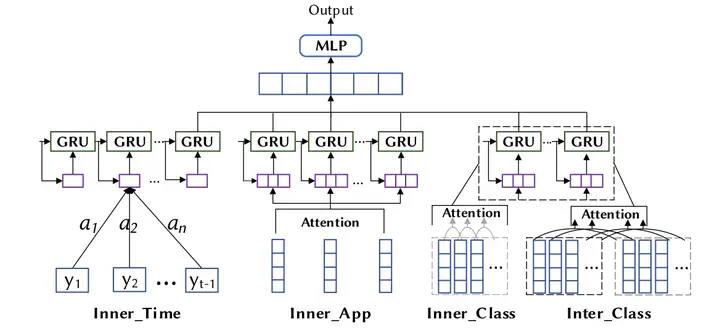
Abstract
App popularity prediction is a significant task in mobile service development, which predicts an app’s future popularity based on its current behaviors. It provides benefits from app development to targeted investment. Popularity is affected by two factors, i.e., internal ones like reviews and external ones like interaction among apps. However, most related studies only explore internal factors but neglect external ones. In fact, external factor plays an important role in popularity prediction modelling since it is the promoting and/or inhibiting influence resulted by app interaction. The app interaction has two major characteristics, i.e., interactivity and dynamicity, which brings challenges to app popularity prediction due to two reasons:1) interactivity—it is hard to evaluate the existence and influence intensity of interactions; 2) dynamicity—the nature of interaction influence, e.g., promoting or inhibiting, and its intensity on popularity change with time. In this paper, we propose DeePOP, a popularity prediction model that innovatively leverages time-varying hierarchical interactions. First, we propose Hierarchical Interaction Graph, which is first studied in this work, to organically characterize the relationship and influence among apps. Second, DeePOP integrates internal factors and time-varying hierarchical interactions as inputs to build the prediction model. It develops multi-level modules based on Recurrent Neural Network with attention mechanism and generates multi-step time series predictions by fusing the outputs of modules. Experiments on a real-world dataset show that DeePOP outperforms state-of-the-art methods in prediction accuracy, effectively reducing the Root Mean Square Error (RMSE) to 0.088.